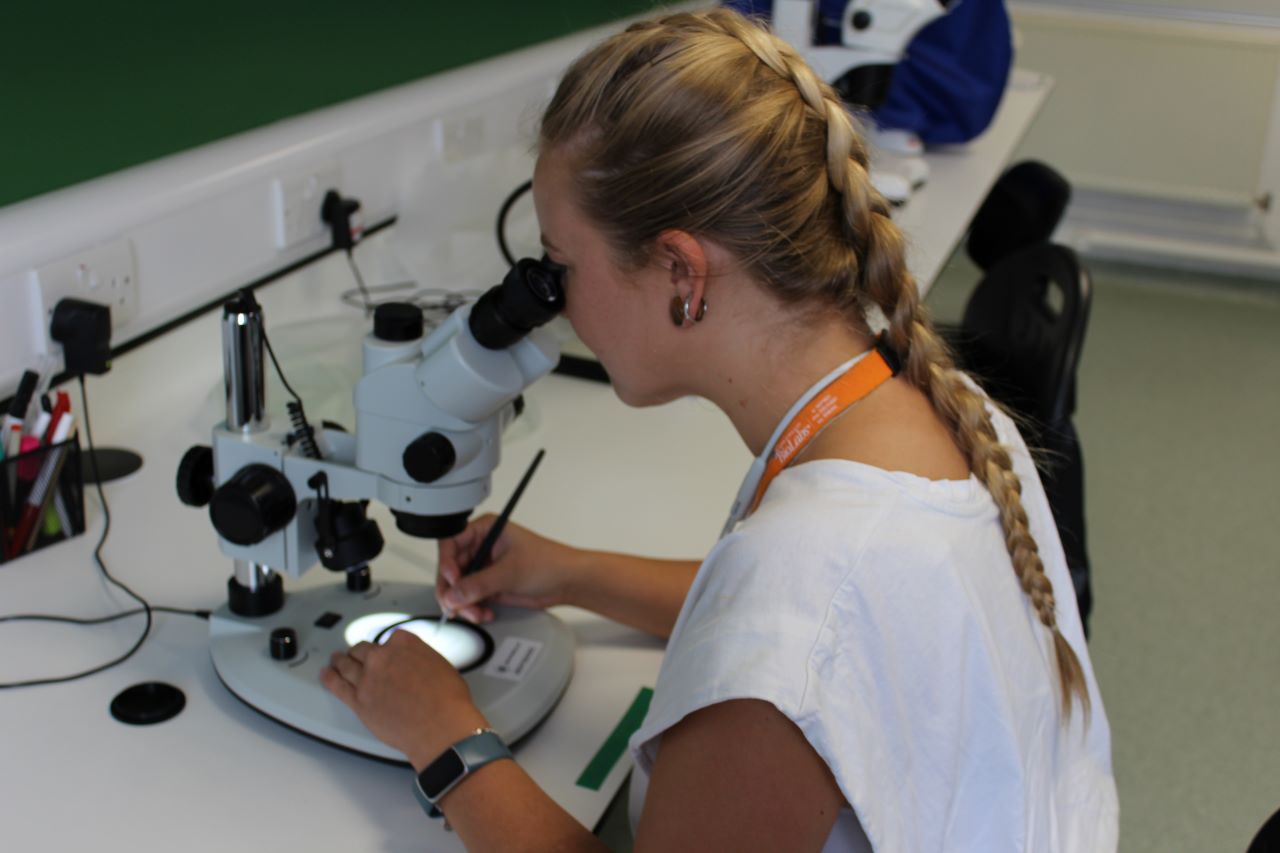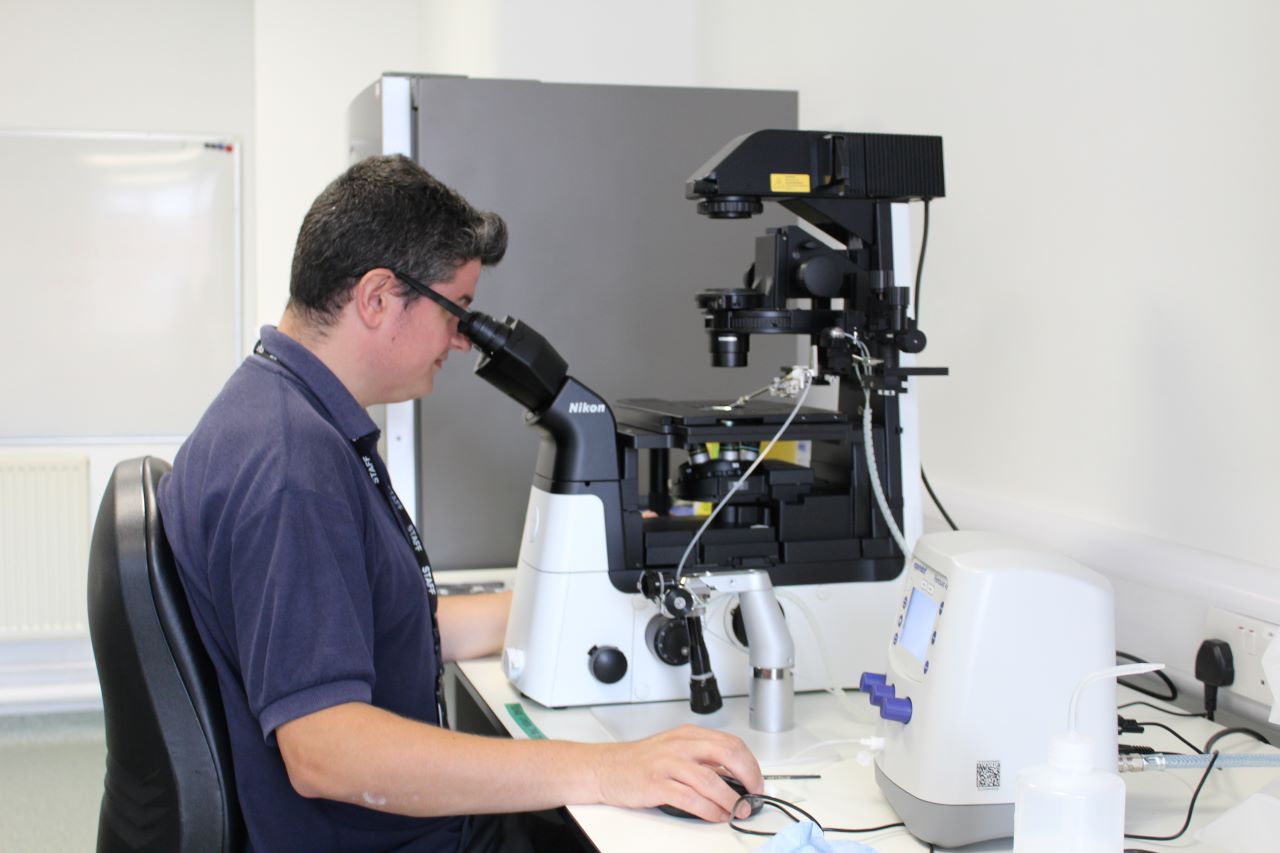By Zachary Stavrou – Dowd, Research Assistant, Liverpool School of Tropical Medicine (LSTM)
& Charlotte Quinn, Post Doctoral Research Associate, Liverpool School of Tropical Medicine (LSTM)
Since the early 2000s, the use of insecticides has been a cornerstone in reducing malaria cases and related deaths. However, more recently, this approach has been encountering diminishing returns, likely due to the widespread emergence of insecticide resistance. This means that new approaches to fight malaria need to be explored. Using CRISPR gene editing, we can both investigate the mutations that lead mosquitoes to become resistant to insecticides and develop new tools that could address this challenge.

Charlotte Quinn preparing freshly laid mosquito eggs for injection. Photograph: Liverpool School of Tropical Medicine (LSTM)
Most malaria research has focused primarily on the Anopheles gambiae mosquito – one of the main vectors of malaria in Sub-Saharan Africa – leaving the Anopheles funestus mosquito (which is also a key species for malaria transmission) historically understudied. Unlike An. gambiae, An. funestus is difficult to rear in an insectary. It is a ‘Goldilocks’ mosquito, requiring precise conditions to thrive. This meant that, until recently, it was not possible to genetically modify this mosquito species. By refining gene editing tools used in other species, our team was the first to develop a CRISPR-based technology that allows the introduction of precise genetic edits in An. funestus mosquitoes, opening up opportunities for advancing the development of new tools to reduce malaria transmission.
Our ongoing research in An. funestus has three broad aims: identifying key genes associated with insecticide resistance; developing novel genetic control tools; and exploring the genetic basis of key traits that make this mosquito species such a good vector of malaria.
The advent of advanced DNA sequencing technologies has resulted in an abundance of genetic data identifying mutations associated with insecticide resistance. However, there are limitations to this data. Identifying the presence of mutations in target genes does not necessarily confirm that these mutations cause resistance. By using gene editing, we can take a mutation that has been identified as possibly causing resistance and introduce this into an An. funestus mosquito in the lab. This then allows us to confirm the role (if any) of the mutation in resistance, as well as to investigate how it impacts the fitness of the mosquito. The overall aim is to have a “hit list” of which to prioritize for insecticide resistance monitoring. If we can identify problematic mutations that are present in wild populations – and how they work – we should be able to adapt insecticides and their use in order to prolong the effectiveness of these tools.

Zachary Stavrou-Dowd injecting mosquito eggs with DNA to start the CRISPR reaction. Photograph: LSTM
Gene drive approaches are a self-sustaining vector control method that could complement existing tools to fight malaria and help eliminate the disease. Since they rely on the mosquitoes themselves to spread, these technologies have the double advantage of being species-specific and adapted to be used in hard-to-reach areas where traditional malaria control tools are more difficult to implement. Significant milestones have already been achieved in the development of gene drive technologies to control An. gambiae mosquitoes. Our group is now focused on translating these advancements to An. funestus. We are examining if known genetic targets, known in An. gambiae, can be used in An. funestus.
To conclude, while Anopheles funestus has historically been overshadowed by Anopheles gambiae in malaria research, it is increasingly clear that this understudied mosquito plays a crucial role in malaria transmission. Collaborative efforts and continued advancements in genetic tools are essential to address the challenges posed by this elusive yet significant vector in the fight against malaria.
